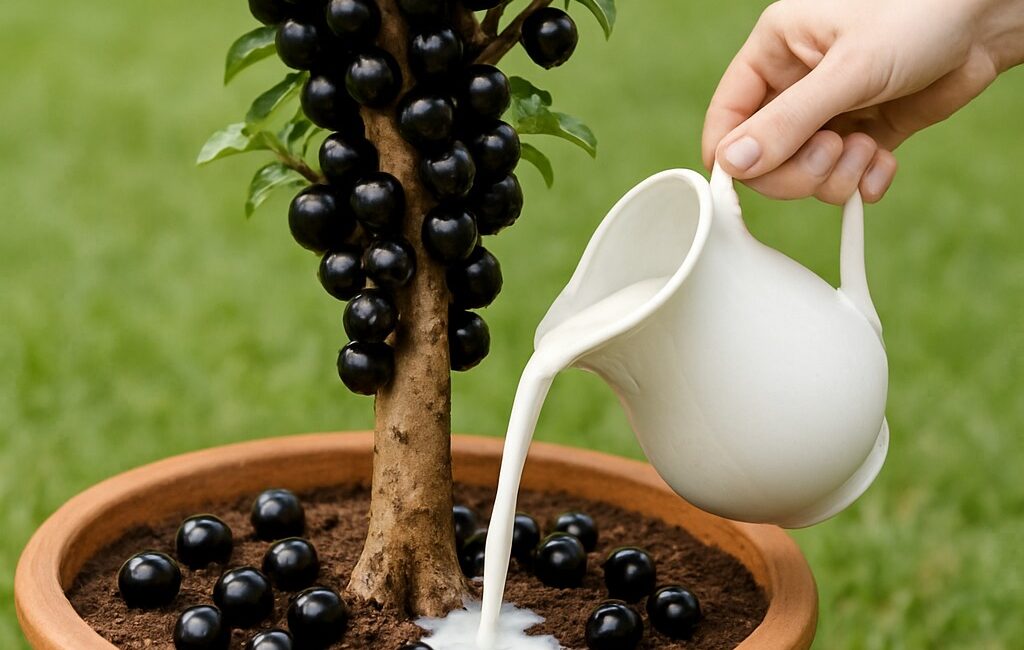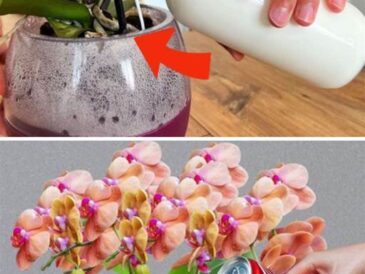If you’re passionate about gardening and eager to maximize fruit production in your backyard, there’s no doubt that the jabuticabeira is a tree you want to grow. Known scientifically as Plinia cauliflora, this Brazilian native fruit tree produces grape-like berries directly on its trunk, offering both visual marvel and delightful taste. Yet, many gardeners struggle to get their jabuticabeiras to fruit abundantly and consistently.
The key to unlocking your jabuticabeira’s full fruiting potential lies in how well you nourish and care for it, especially its root system, soil health, and nutritional intake. Today, I will reveal an effective, all-natural fertilizer recipe that only requires one cup of preparation but can transform your tree’s productivity dramatically. Combined with best cultivation practices, this natural booster can help your jabuticabeira yield fruits throughout the year, ensuring a bountiful harvest season after season.
Why is Fruit Production in Jabuticabeira Challenging?
Before diving into the recipe and detailed care, it’s important to understand why jabuticabeiras sometimes fail to produce abundant fruits despite appearing healthy.
Characteristics of Jabuticabeira
The jabuticabeira is a slow-growing tropical tree native to Brazil, but widely cultivated in other tropical and subtropical regions. Its unique cauliflorous fruiting habit—fruits grow directly on the bark of the trunk and branches—makes it special. The berries are not only delicious but rich in antioxidants and vitamins.
However, the tree’s slow maturation and specific nutritional needs mean fruiting can be irregular without proper care.
Common Barriers to Fruit Yield
- Poor Soil Nutrition: The jabuticabeira demands a nutrient-rich, well-structured soil for optimal flowering and fruiting. Deficiencies in phosphorus, calcium, and micronutrients limit bud and fruit formation.
- Weak Root Development: A vigorous root system is crucial for nutrient absorption and water uptake, especially during flowering.
- Pests and Diseases: Root rot, fungal infections, and insect infestations can stress the plant and reduce yields.
- Environmental Stress: Temperature extremes, drought, or inconsistent watering can cause flower drop and fruit abortion.
- Improper Fertilization: Over-fertilizing with nitrogen-rich fertilizers encourages leaf growth but inhibits flowering and fruit production.
By addressing these issues holistically and supplying the right nutrients in a bioavailable form, you can significantly increase fruit abundance.
The Power of Natural Fertilization: One Cup to Explode Fruit Production
This section introduces the simple, cost-effective, natural fertilizer recipe that delivers calcium, phosphorus, natural growth hormones, and protective agents directly to your jabuticabeira’s roots.
Recipe Ingredients
- 1 liter of chlorine-free water: Chlorine in tap water can harm beneficial soil microbes. Use rainwater, filtered water, or water left to stand for 24 hours to dissipate chlorine.
- 2 dried eggshells: A rich source of calcium carbonate, essential for cell wall strength and preventing blossom end rot.
- 2 tablespoons of milk: Supplies proteins and natural sugars that activate beneficial microbial populations in the rhizosphere.
- 1 chopped aloe vera leaf (babosa): Contains natural plant growth regulators, vitamins, and enzymes that stimulate root growth and boost immunity.
- ½ teaspoon of cinnamon powder: Acts as a natural antifungal agent, protecting roots from soil-borne pathogens.
- 1 tablespoon of bone meal: Provides a slow-release source of phosphorus and calcium, critical for root development and flower induction.
Preparing Your Fertilizer Mixture: Step-by-Step
- Dry the Eggshells Completely: Wash and air-dry eggshells for several days until fully brittle.
- Blend the Ingredients: In a blender, combine chlorine-free water, dried eggshells, milk, chopped aloe vera, cinnamon powder, and bone meal. Blend until smooth.
- Strain if Needed: For easier application, strain the mixture to remove any large particles.
- Use Fresh for Maximum Nutrient Potency: Prepare fresh batches monthly or store refrigerated for up to one week.
Application Protocol: Maximizing Absorption and Effectiveness
When to Apply
- Apply during the early morning or late afternoon to prevent rapid evaporation.
- Start applications when the tree is in pre-flowering or early flowering stages for maximum effect.
How to Apply
- Water your jabuticabeira deeply before applying the fertilizer to moisten the soil.
- Pour approximately 250 ml of the fertilizer mixture around the base of the tree in concentric circles, covering the root zone.
- Avoid watering the plant for the next 48 hours to allow nutrient absorption.
- Resume regular watering on the third day.
Frequency
- Repeat once every 30 days for three consecutive months.
- After three months, evaluate fruit set and tree health to decide whether to continue monthly applications or reduce frequency.
Scientific Breakdown: Why This Fertilizer Works Wonders
Calcium (Eggshells and Bone Meal)
Calcium strengthens cell walls, facilitating fruit firmness and reducing physiological disorders like blossom end rot. It also plays a key role in signal transduction pathways essential for pollen tube growth and fertilization.
Phosphorus (Bone Meal)
Phosphorus is vital for energy metabolism (ATP production) in plants, which supports root growth and flower bud differentiation.
Click page 2 for more




